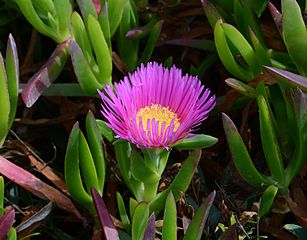Greece is well used to visitors, whether they are those who come to enjoy a few weeks of sunshine or explore its natural or man-made attractions, or those who are looking for a way to escape from hardships closer to their home and see Greece as a stepping stone to a brighter future. Those in the first category are generally very welcome since they come and they go, but not before contributing to the local economy. The second category of visitors, although numerically much smaller, stirs up various emotions, particularly where they are localised in higher concentrations such as the so-called reception centres for unregistered migrants who are seeking asylum.
There are, however, other visitors which man-made borders are generally ineffective at holding back. These are the plants and animals which, just like human expats, have found an attractive place to settle down and, in many cases, also like homo sapiens, have flourished at the expense of the species that were there already. These are often called invasive species although this term is not completely satisfactory since many of them have been introduced as pets, for pest control or as garden plants and then subsequently spread out beyond their original boundaries. Sometimes these introduced species do not cause any major disturbance to the local flora and fauna, but very often irreversible changes to the ecosystem can occur. There are many well-known cases where this has happened such as for example the introduction of “Shakespeare’s birds” to North America, of numerous European mammals to Australia and New Zealand, weeds such as Japanese knotweed, the bane of UK house-owners, and numerous aquatic species like the lionfish which is becoming increasingly common in the Mediterranean.
In Greece, alien plants are now widespread and a list of them has been compiled which includes an assessment of whether they are considered invasive or non-invasive. The success of alien plants in establishing themselves in a new environment has been the subject of various investigations over the years and, just recently, Professor Sergi Munné-Bosch at the University of Barcelona has published a study which focused on plant species from the genera Carpobrotus, Acacia, Agave, and Opuntia, which are now common in the Mediterranean region and will be very familiar to Greeks and visitors to Greece.

Alvesgaspar, CC BY-SA 3.0, via Wikimedia Commons


dxrules44, CC BY 3.0, via Wikimedia Commons

Zeynel Cebeci, CC BY-SA 4.0, via Wikimedia Commons
The study reveals the sophisticated strategies of invasive plants to occupy new habitats successfully and displace native flora. The author stresses that plants such as the Carpobrotus species are very resistant to changing conditions associated with climate change and show a perfect combination of clonal and sexual reproduction to be able to colonize new spaces quickly and are also able to create persistent seed banks that remain buried for years.
As the author notes: “These biological invasions have been caused by ourselves, all these areas show a significant characteristic: the footprint left by humans. Human activities (gardening, urban planning, tourism, etc.) end up fragmenting natural habitats and facilitate the introduction of new species that then adapt extraordinarily to the spaces that we have modified forever. It it is our lack of knowledge that has led us to have Mediterranean habitats particularly threatened by the presence of invasive plants that will never return to the way they were before. Even if there are many awareness campaigns, we will likely never manage to eradicate them, at least in some areas, so we have to prevent the invasion of colonizing plants where they have not yet been introduced by human action.”
Reference article:
Munné- Bosch, S. «Achieving the impossible: prevention and eradication of invasive plants in Mediterranean-type ecosystems». Trends in Plant Science, November 2023. DOI: 10.1016/j.tplants.2023.11.007.

One Comment